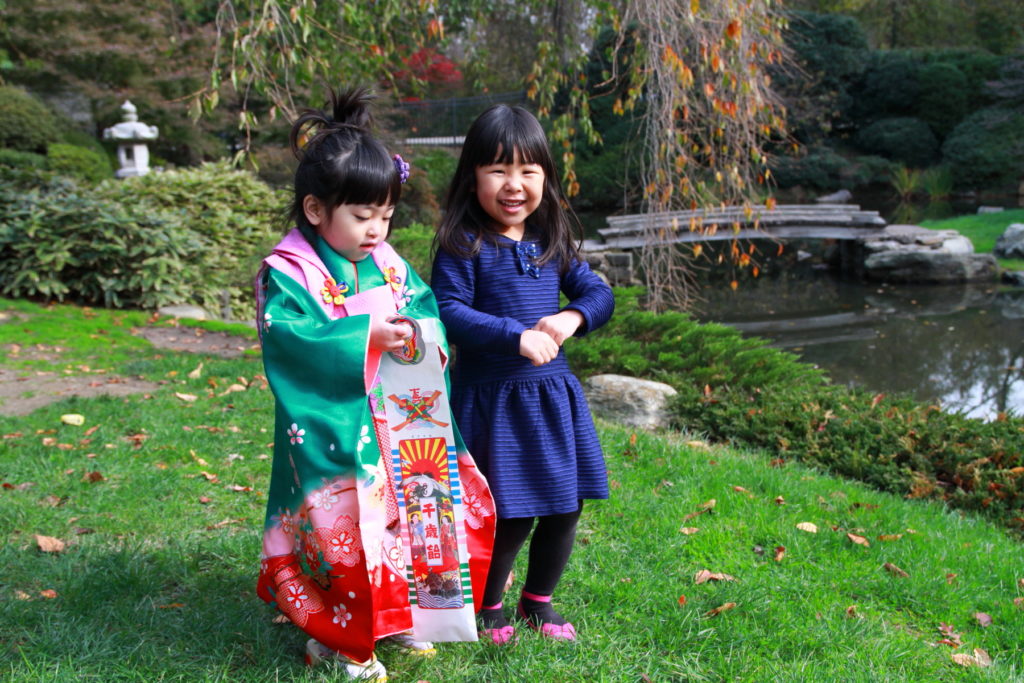Shichi-go-san photo sessions are now closed.
Visit a Japanese Shinto shrine in November and you’re likely to see young children dressed in intricate kimono, hair and makeup meticulously styled and bags of candy and parasols in hand. Shichi-go-san is a rite of passage, a traditional Shinto ceremony that celebrates the growth and well-being of children as they age, and an opportunity for parents to have their children photographed in full kimono. It is celebrated on November 15, though since it is not a national holiday, Shichi-go-san is often observed on the closest weekend. This November, we welcome Rev. Kuniko Kanawa, a Shinto priestess, kimono stylist, and professional photographer, to Shofuso for kimono dressing and photography on Saturday, November 9 and Sunday, November 10 where Shinto blessings will take place.
Shichi-go-san means “seven-five-three,” and is intended for three- and seven year-old girls and five year-old boys. The tradition dates back to Heian era Japan, and the odd ages are auspicious numbers in East Asian numerology. (Fifteen, the sum of three, five, and seven, makes the date of November 15 especially lucky.) It’s also rooted in the folkloric belief of young children being close to the spirit world: the saying “until seven years old, children are in the gods’ domain” [Source] reveals the origin of this belief, along with the desire to guard children from misfortune and cherish their growth and good health. Visiting a Shinto shrine in order to receive blessings from the spirits is central to Shichi-go-san rituals. The ceremony, which includes purification, prayer, and the offering of a tamagushi branch, aims for harmony between the family, nature, and the gods and is meant to ensure children grow up happy and healthy [Source].
Different customs have been added over several centuries. Chitose-ame (literally “thousand years candy”) is given to children on Shichi-go-san. The candies themselves — two long sticks in white and pink — are placed in an envelope decorated with cranes and turtles for longevity and pines and bamboo for good luck [Source]. The samurai class added other rituals: starting at three, children were permitted to begin growing out their hair. At five, boys could begin wearing hakama pants, and at seven, girls switched from wearing simple cords to tie their kimonos to the obi worn by older girls and adults. A more modern practice is photography on Shichi-go-san, which for many parents is a way to commemorate their child’s first time wearing kimono.


